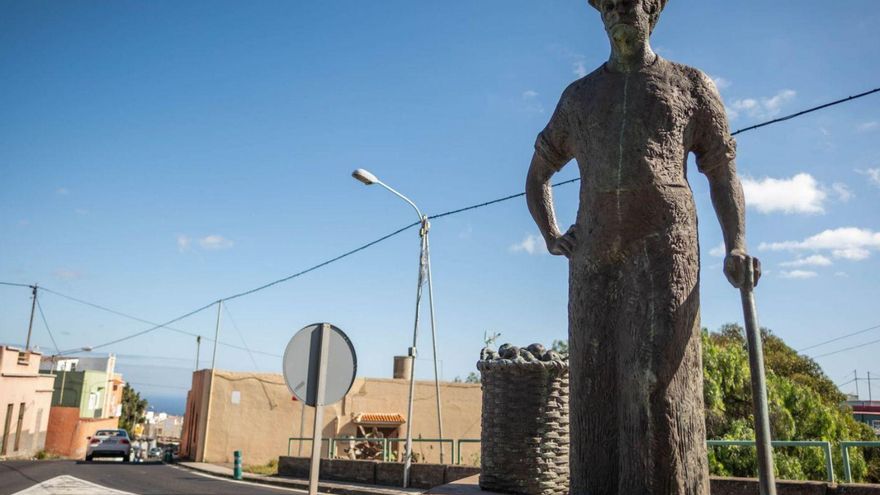
Iván possesses two reasonably attractive potato fields in El Sobradillo, a locality situated in the south-western part of Santa Cruz, an area long regarded as the capital’s food source, with El Tablero being its focal point. He was on the verge of digging to gather the yield from one of the plots last December, but the winds brought by Storm Dorothea left them “bare-stemmed.” He managed to salvage a portion from one field but experienced a 75% loss in production. This situation is dire after enduring a year of relentless drought in the midlands of Tenerife, which has been under a water emergency since May 2024. This situation exemplifies the urgent need for measures such as the recently introduced Potato Island Plan.
To alleviate this predicament, especially impacting the North – which includes the significant productive hub of the La Orotava Valley and specifically Icod el Alto (Los Realejos), known as the potato capital – a structural framework provides substance to this theoretical approach. Its goals include, among others, a 5% increase in the cultivated area across the Island over the next four years (2025-2029), currently just over 1,000 hectares. Moreover, enhancing self-sufficiency – which nearly reached 100% in the 1990s but now sits around 60% – with initiatives like grants to producer cooperatives (200,000 euros in the past year) to support the installation of cold storage facilities for preserving tubers throughout the year – as by September and October, only the older potatoes are left – to ensure a steady supply to the local market (the Canary Islands community boasts the highest potato consumption). Exports have been banned for the past thirty years due to pests such as the Guatemalan moth and the red beetle, notably publicised last year when pressure was applied by England on the local market. Another crucial aspect is the generational transition, a matter that has remained unresolved for years. The plan outlines various support measures from production through to marketing to facilitate this transition.
The Technical Service of Agriculture and Rural Development of the Cabildo of Tenerife has prepared an extensive 239-page document detailing the future of potato farming, which ranks third in production (45,000 tons per year), following bananas and vineyards. In 2021, approximately 1,745 hectares were dedicated to potatoes, representing 9.3% of the total cultivated area. Current estimates suggest that only just over 1,000 hectares are actively in production. In recent times, a degree of stability has been noted in both of these parameters.
The plan was developed after consultations with nearly a hundred groups and farmers. Valentín González, the Councilor for the Primary Sector of the Cabildo, emphasises this consensus. The proposal aims to address vulnerabilities such as production expenses, land neglect, challenging price competition with imported potatoes, and a lack of training in commercial management.
The Plan outlines six key areas of action: enhancing competitiveness; devising new marketing strategies; promoting the social economy; increasing the availability of healthy and pest-free potatoes; fostering agrosystems and biodiversity; and achieving self-sufficiency. Furthermore, it aims to transform farmers into stewards of the territory. Iván and his 9,000 fellow workers on the Island (most of whom are engaged in secondary activities) are currently focused on “looking up at the sky to see if it rains” and hoping for precipitation.
Old Potatoes in Madrid
The old potatoes from Tenerife will be highlighted at Madrid Fusión 2025. The Cabildo is showcasing them at the Fair in a workshop format. The aim is to “discover them, appreciate them, acknowledge their remarkable qualities, and ultimately, consume them,” states Domingo Ríos, Head of the Agriculture Service in the island’s Corporation. Varieties of coloured potatoes are emblematic of our culinary heritage, a gastronomic treasure and unique offering. The principal native varieties include black and white lily; pretty white, black, and red; prettily bird’s eye borrilla or melonera; baga red; black egg yolk; white-black wig; torrent and black Venezuelan. In contrast, white or commercial seed potatoes refer to those imported from abroad, meaning farmers procure and subsequently plant seed potatoes sourced from the United Kingdom, Ireland, or Denmark.
Subscribe to continue reading















